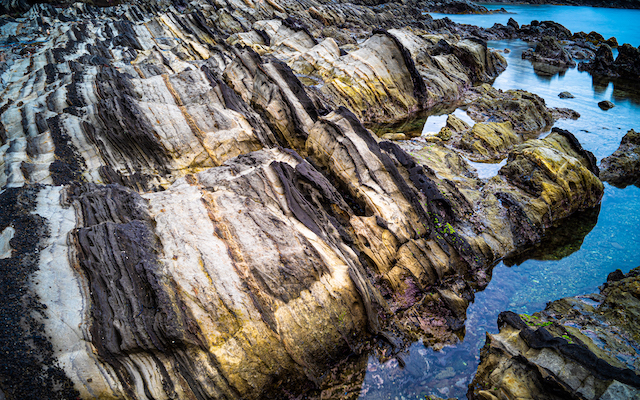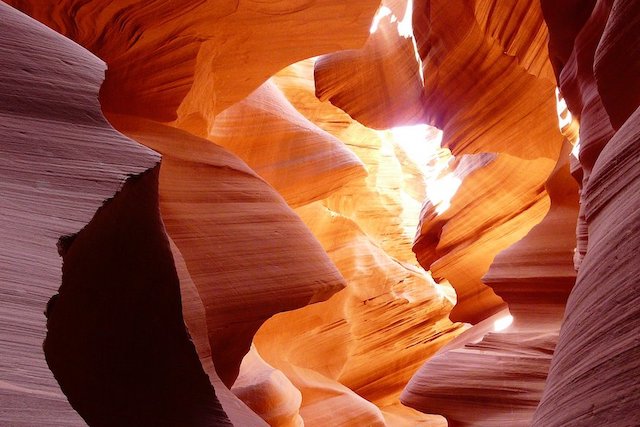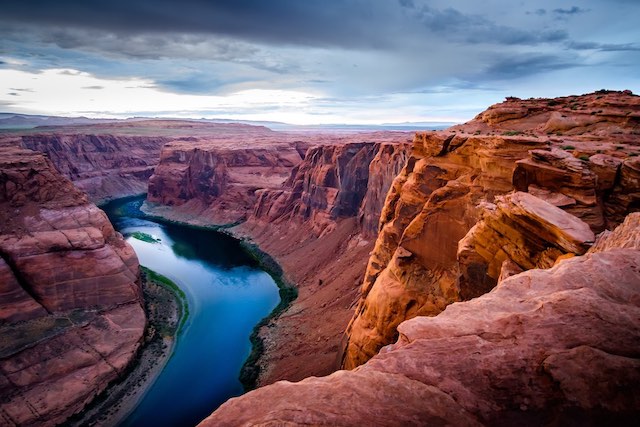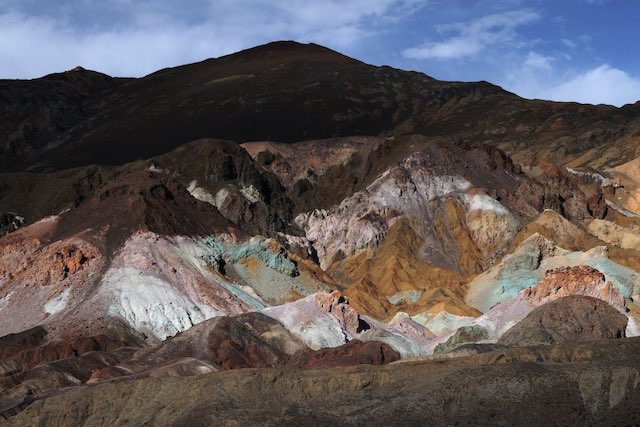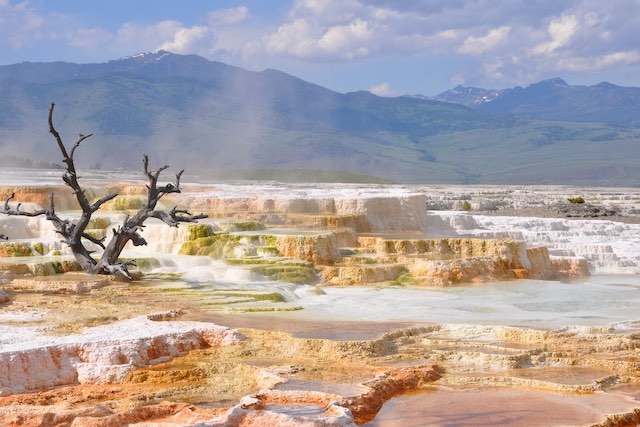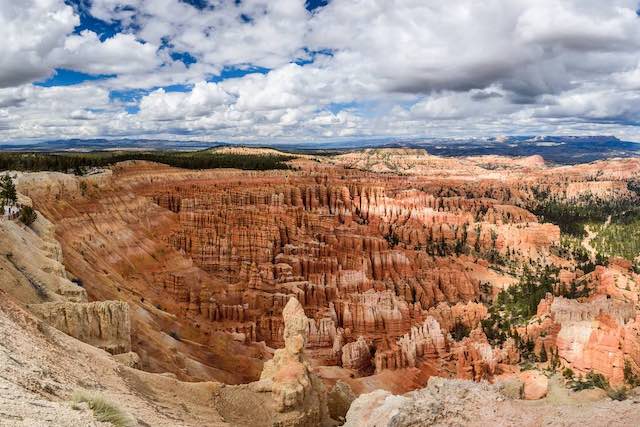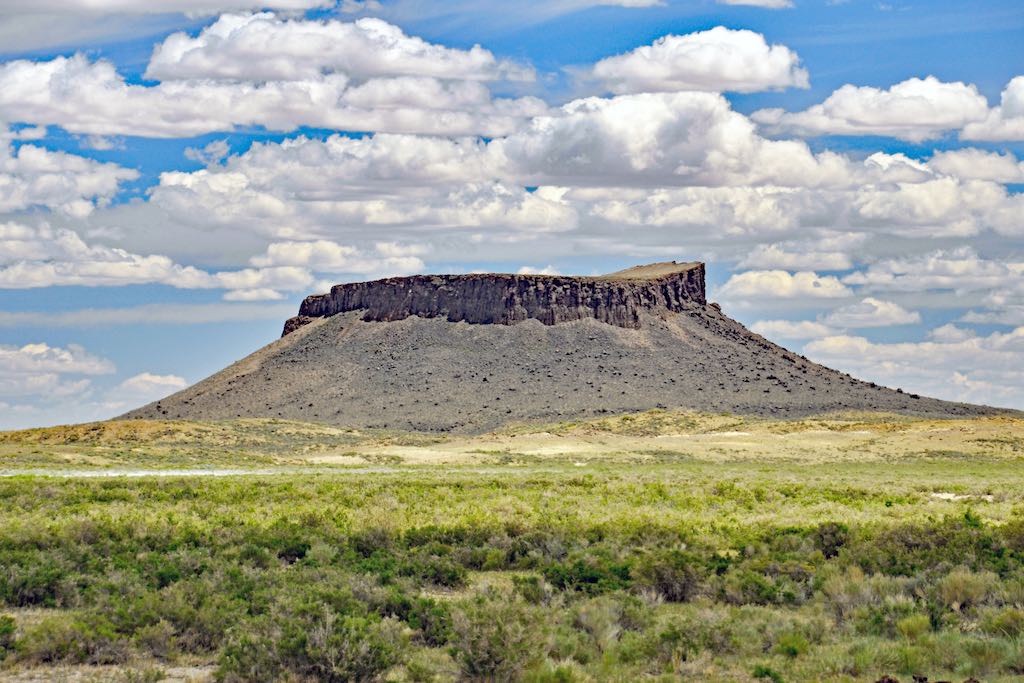
Rare lava with its source in the mantle
In the southwestern part of Wyoming, there is a volcanic rock area called the Leucite Hills. The lava that can be seen in this area was spewed out between about 3 million and 900,000 years ago, and there are many table-shaped rocks made of lava scattered here and there in the Leucite Hills. The photo at the top shows one of them, Black Rock.
There are several types of lava, but the lava in the Leucite Hills is a very rare type called lamproite. The lamproite lava was formed over a billion years ago when the mantle underwent chemical changes deep underground, and was then erupted by volcanic activity. It contains even less silicon dioxide than basaltic lava (less than 45 percent), and is characterized by the presence of a whitish mineral called leucite. This is where the name “Leucite Hills” comes from.
In addition, olivine pebbles are often incorporated into lamproite lava. These are beautiful, green pebbles, like the one in the next picture.
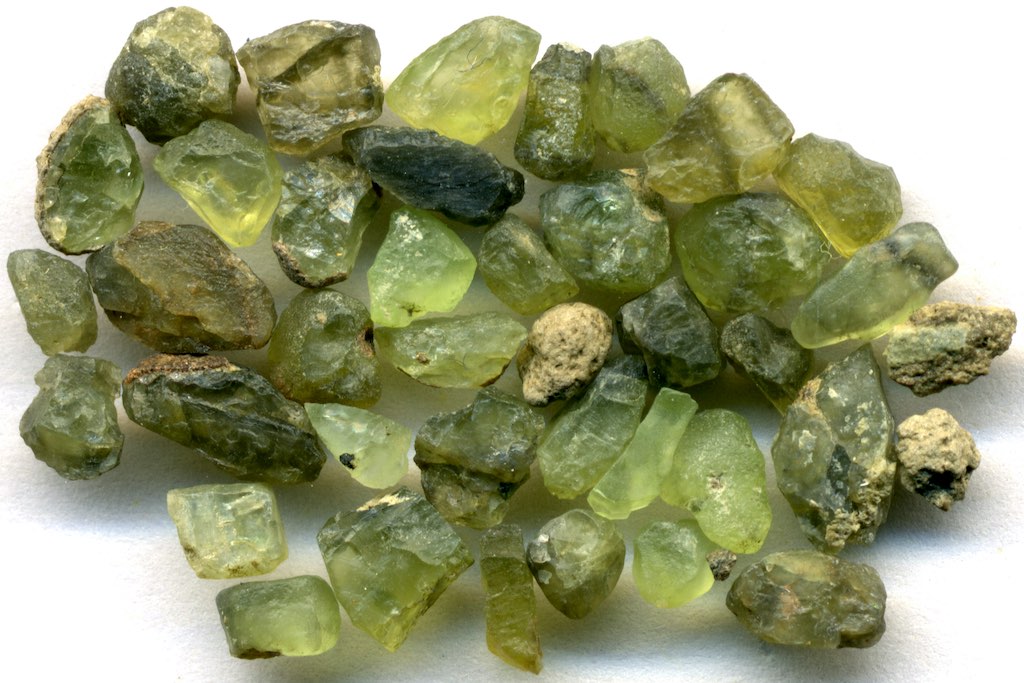
The olivine in this photo was picked up from the surrounding sediment that had accumulated as the rocky mountains of Black Rock were scoured. There are quite a lot of them.
The name “olivine” is derived from its olive color. And the bright green, transparent crystals are also gemstones, and they are called peridot.
Since olivine is the primary mineral that makes up the mantle, there is a lot of it deep underground. In other words, when lamproite lava formed in the mantle rises toward the surface, its path is full of olivine. The reason why olivine pebbles are incorporated into the lamproite lava is because it erupted to the surface, capturing the surrounding olivine along the way.
Stump-like rock formations are erosional landforms
By the way, the picture of Black Rock at the beginning looks like a tree stump. This stump is a pipe made of lava, which is a pathway for magma that has cooled and hardened. Originally, they were buried underground, but as the surrounding strata eroded, they became exposed on the surface of the earth.
The Lucite Hills were the center of volcanic activity, so there used to be several magma passages (called volcanic vents) in this area where eruptions took place. The Black Rock is a remnant of such an eruption.
Let’s simply imagine Black Rock at the time of the eruption.
First, the mantle, which was chemically altered to a special composition more than a billion years ago, was partially melted by mantle movement at a much later time to form lamproitic magma. The lamproitic magma reached the surface through several volcanic vents, one of which erupted at the site of Black Rock. As a result of the eruption, volcanic ash fell on the surrounding area, and mountains were formed by the falling scoriae, and lava accumulated in the crater, forming a lava lake. This kind of volcanic terrain must have been created at that time.
After a long time, the volcanic terrain was scoured away by erosion. Lava lakes, cinder piles, volcanic ash-laden soil, and even the strata underneath were extensively scraped away, and as a result, the former pathways of magma came to the surface.
This is the formation process of Black Rock, which looks like a stump. Black Rock is a pipe of lava that connects the deep mantle to the surface, and what looks like a stump is the tip of the pipe.
A rock similar to kimberlite, which produces diamonds
There is a rock called kimberlite that is famous for producing diamonds. This kimberlite is actually a rock similar to the lamproite found in the Leucite Hills.
Although there are differences in the minerals they contain, they are both rocks that were formed when magma with its source in the mantle rose to the surface. Therefore, they are the pipes that connect the inside of the mantle to the ground, and kimberlite also contains rocks that were captured in the mantle. Diamond is just a stone in the mantle that was brought to the surface in this way.
Kimberlite is a rock that has brought diamonds to the surface of the earth. If that’s the case, then lamproite, a very similar rock, might also contain diamonds, right?
That’s actually true, and lamproite is also a rock that produces diamonds. Although not lamproite in the Lucite Hills, lamproite does produce diamonds at the Argyle Mine in Western Australia, one of the largest diamond mines in the world.
References
Katsuaki Watanabe (2020) Utsukushisugiru chigaku Jiten (Handbook of the Most Beautiful Geological Wonders), Tokyo: Shuwa System [published in Japanese].
Geology of Wyoming | Leucite Hills
Flickr | Black Rock 27
Location
Translated with www.DeepL.com/Translator (free version)

